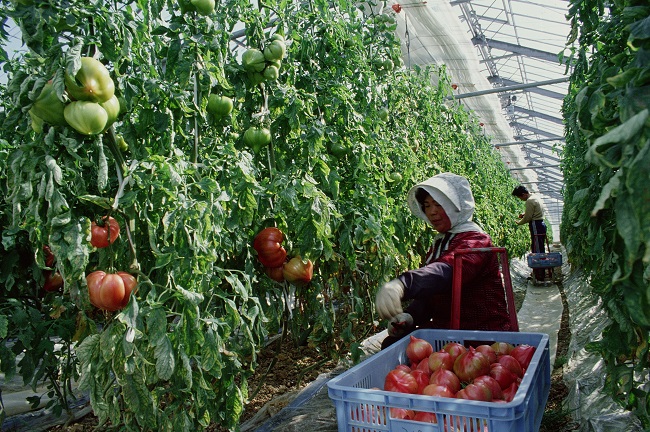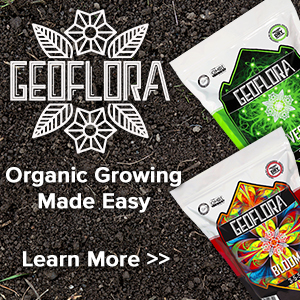
When growing greenhouse tomatoes during the winter months, particularly those located in the northern latitudes, positive correlations between tomato fruit yield and solar radiation intensity exist. But what is the correlation during the summer months when solar radiation intensity is high? Solar radiation data are difficult to obtain since most weather stations do not have radiation-recording instrumentation. For some time, most weather stations recorded minutes of sunshine, but no longer. Therefore, if a grower is to make this correlation, he must have the instrumentation to record solar radiation intensity if such data is not available from a nearby weather station.
A greenhouse tomato grower, located in the southern region of the United States, recorded weekly harvest fruit yield beginning in mid March through June. During this time, solar radiation intensity is increasing daily, so in April, shade cloth was pulled over the greenhouse in order to reduce radiation input.
The grower obtained accumulated minutes of sunshine from a nearby weather station. I was given his fruit data so that could determine if there was a correlation between fruit yield and minutes of accumulated sunshine. There was no correlation between that week’s accumulated minutes of sunshine and fruit yield, but there was a correlation 2 or 3 weeks before fruit harvest – the kicker being that the correlation was negative! This meant that the higher the accumulated minutes of sunshine 2 to 3 weeks before mature fruits were harvested, the lower the fruit yield.
Obviously, additional research is needed to substantiate this finding as well as to quantify at what level of solar radiation negatively impacts fruit yield. At some point, the tomato plant becomes “light saturated,” below which there is a positive correlation between radiation intensity and fruit yield, and then above which, either there is no correlation, or the correlation turns negative as suggested in these findings.
From my own experiences growing tomatoes in greenhouses located in South Carolina and Georgia in the period from March to June, ventilation method and shade does significantly affect fruit yield. Moving conditioned air up through the plant canopy rather than pulling it across the canopy, and the ability to draw shade over the plant canopy during periods of intense solar radiation, are essential for high yield production. Unfortunately, most greenhouses are not designed to provide these capabilities.
For several years, I have been growing tomatoes hydroponically in my vegetable garden. Impressed with how well my plants grew and yielded fruit, a neighbor asked me to place a hydroponic growing unit in his garden. At his garden site due to the presence of tall trees nearby, the tomato plants were in shade till mid morning and then in full sun the remainder of the day. At my garden site, the plants were in full morning sun, and due to tall trees nearby, in shade in the late afternoon.
The height of the support stakes in my hydroponic growing unit is 7 feet. When plants reach that height, they are dropped several feet. When again reaching the top of the stake, the plants are topped. With topping, two things happen. Fruits on the plant quickly mature and axial suckers appear. Letting these suckers grow, another flush of fruit can be produced, their number and quality depending on the growing (weather) conditions during the weeks till frost. My neighbor did the same with his plants, but after topping, only a few suckers appeared and just a few fruits were formed. Why? I surmised that solar radiation exposure was the reason since all other factors were identical.
Most common tomato fruit disorders, such as green shoulders, sun scald, cracking, catfacing, and blossom-end-rot (BER) are either directly or indirectly related to solar radiation since radiation intensity frequently correlates with air temperature and moisture conditions, factors that contribute to plant stress. The tomato plant is stress-sensitive, so when temperature and/or moisture extreme conditions occur, both fruit yield and quality are adversely affected. Remember current weather conditions are not related to current fruit status as there is usually a delay of 2 to 3 weeks after a stress condition occurs before reflected in the current fruit yield and quality.
The intensity of solar radiation is not the only factor that impacts the tomato plant as both light duration and wavelength distribution (light spectrum percentages from ultraviolet to infrared) also effect plant growth and flowering – but this is a topic for another article.
J. Benton Jones, Jr. has a PhD in Agronomy and is the author of several books. Dr. Jones has written extensively on hydroponic growing and outdoor vegetable gardening employing sub-irrigation hydroponic growing systems.
Related Articles & Free Email Newsletter
How to Grow Juicy and Tasty Tomatoes
Preventing Late Blight in Tomatoes & Potatoes




Comment here